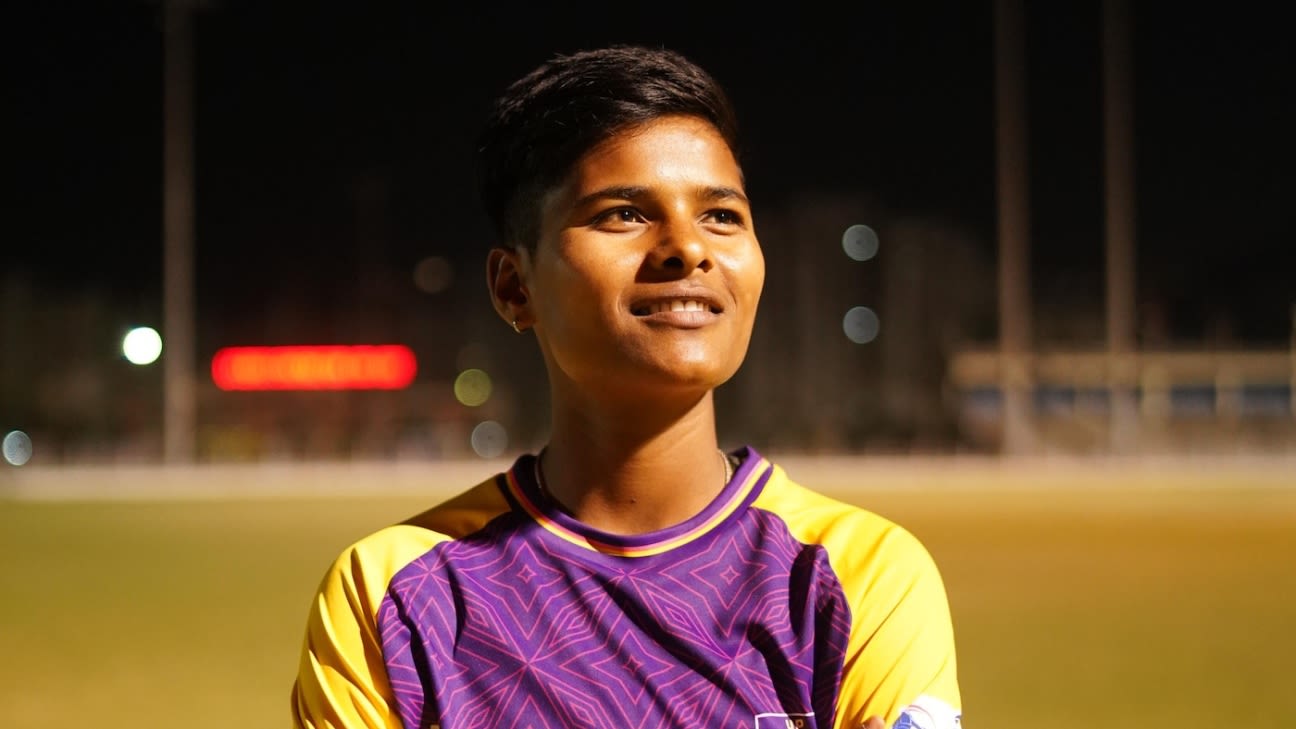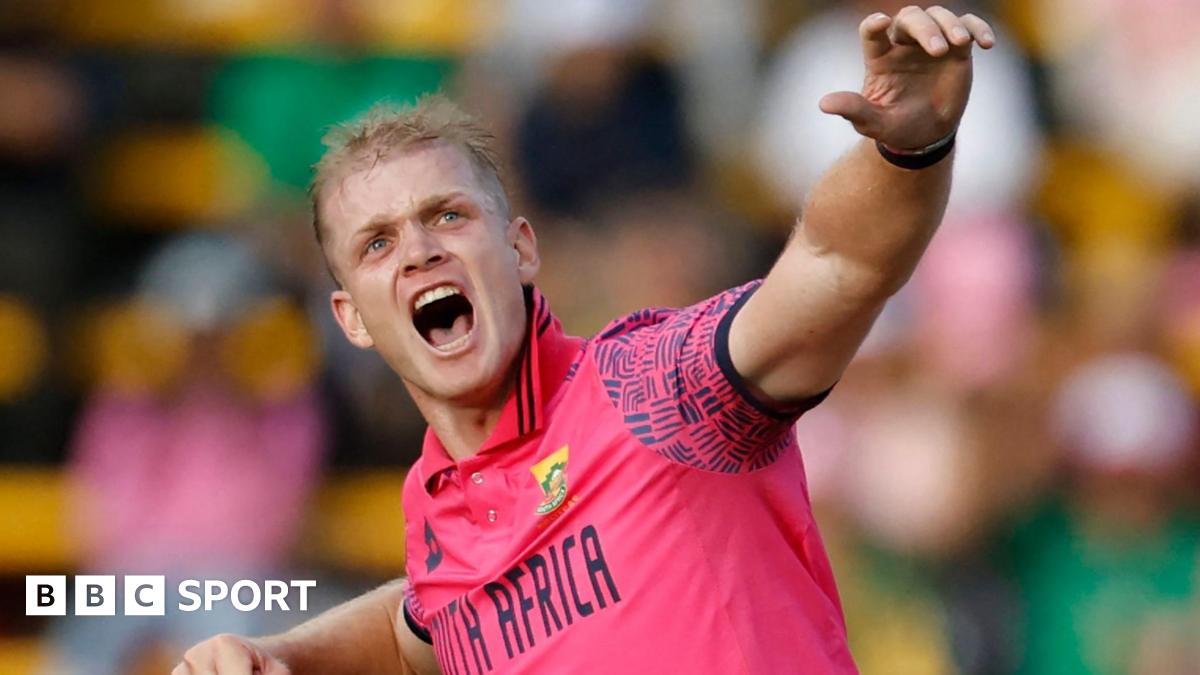How Kranti Goud’s need for speed found her a place with the UP Warriorz

Seven years ago at a women’s leather-ball cricket match in Ghuwara, a small town in Bundelkhand in the Chhatarpur district of Madhya Pradesh, one of the teams was a player short. Spotting a young girl wandering around with a stick in hand, they asked her if she would like to play. That 14-year-old had grown up playing tennis-ball cricket, and was crazy enough about it to risk a scolding, playing it even during her exams.
But all she had played was tennis-ball cricket matches and tournaments with boys, much to the displeasure of her neighbours and those known to her family, who thought that a village girl was not meant to play cricket.That did not bother the teenager or her family. She grabbed that chance to play her first leather-ball game, starred with bat and ball and took home player-of-the-match honours.
“When UP Warriorz picked me, I had tears in my eyes,” Goud says. “I called my family and spoke to my oldest brother, Mayank Singh.” She is the youngest of six siblings – three brothers and three sisters. ” He was watching the auction – he had been looking forward to it. At first he got very emotional, and we couldn’t speak. I called him again after a while; he started crying and even I couldn’t control myself.
“They say in the village that she is a girl, so don’t let her play cricket. But my brother did not listen to them, supported me fully. The family supported me. So that is why I am here.
“My first thought after getting picked was that I had been doing well in the senior one-dayers, so I just wanted to continue the same in the WPL. I was also excited to meet the India players and play alongside them.”
After that memorable first match with a leather ball, Goud travelled to Jatara, a town about 70km away in Tikamgarh district, for another match, where she did well again. There she was spotted by Rajiv Bilthre, the secretary of the Chhatarpur District Cricket Association (CDCA) and the coach of Sagar Division, who runs the Sai Cricket Academy.
“She was agile, fast, and very athletic. I felt she could do well, so I asked her father to enrol her with me and leave her in Chhatarpur,” Bilthre says. “I told him I will make a good player of her. Her father said, ‘Hum apni beti aapko saunp rahe hai. [We are entrusting our daughter to you.] You have to shape her future.’ It is her effort and talent that has got her to where she is, by god’s grace. I did what I could. Her family was financially not well off, so I helped her a bit – kit, dress or bat – because these days you need good bats.”
In India it is natural for youngsters to pick up a cricket ba; batters have long held sway in the public imagination – Sunil Gavaskar, Sachin Tendulkar, Mithali Raj, Virat Kohli, Harmanpreet Kaur, Smriti Mandhana. How did Goud take to fast bowling then?
“It just happened,” she laughs. “As I started playing with the tennis ball, I saw that everyone just ran in and bowled medium pace. I did not even know spin bowlers existed. Where are spinners in tennis-ball cricket anyway? My brother also told me to bowl medium pace, so I did that. After I joined [Bilthre’s] academy, I saw there weren’t many medium-pacers. I saw one, Sushma Vishwakarma, who became my friend. She also asked me to stick to fast bowling and there was no looking back.”
“We conducted an inter-district U-16 tournament, in which Kranti played from Chhatarpur district,” Tripathi says. “She was their captain and gave all-round performances. We then made her the captain of Sagar Division, and we finished runners-up for the first time in the 2018-19 U-16 tournament that the MPCA conducted. Teams from Indore, Gwalior and Bhopal used to play more, so one-odd win in the tournament for Sagar Division was a big thing. Kranti helped our team finish runners-up – Bhopal were the champions – and her career kind of kickstarted there.”
“She had the speed [when she was younger], which was unlike most girls at the time,” Bilthre says. “She used to match the boys when she used to run. I felt she was extraordinary at that age. So we focused on her fitness and undertook some bowling drills. She is very hard-working: if she is on the ground for three hours, she will spend every minute on the ground and not laze around or chit-chat.”
At CDCA as well as Sagar Division, Bilthre focused on having players with all-round skills. He recognised the need for multifaceted players and helped them develop. In Goud’s batting, he saw promise. She had the power and was nimble on her feet, which she used well against spin. He worked on her technique and taught her the importance of hitting in the V. Goud honed her batting skills with months of practice under methodical guidance from Bilthre. But she lacked one thing: patience.
“Earlier, she wanted to hit every ball,” Bilthre says. “I asked her to work on her patience and made her meditate. During matches we asked her to look at us in the dugout after every ball and we used to tell her using gestures that she needed to bat calmly, patiently. Then she started to play according to what we said, and that became a habit for her. Until the batter develops such a mindset, they won’t bat well. Now it is an inherent skill – we need not tell her anymore how to play in what situation.”
“My [natural] instinct is to bat in a T20 template even in the one-day format. When I go to bat in a 50-over game, my team-mates hope that I don’t play some ulta-seedha [weird] shot,” she says. “In the U-23 one-dayers [quarter-final] last year, my team was hoping I didn’t throw my wicket away since we had lost quick wickets. At that time, I thought I shouldn’t do something different, since we had a lot of overs left. I played the waiting game, but then hit the balls that were in the slot.” Offspinner Piyali Ghosh went for two sixes over cover, Goud’s favourite shot.
To date, she and Bilthre talk before and after every game. The topics range from tactical and technical stuff to “motivational chats”. At Warriorz, Saima Thakor has been Goud’s go-to, helping her understand match simulation and bowling under different situations.
Goud’s progress has shown that even girls in villages can, and absolutely should, play cricket.
S Sudarshanan is a sub-editor at ESPNcricinfo. @Sudarshanan7
Related
‘Listen from one ear, ignore from the other’: Former India…
India's Rohit Sharma and Mohammed Shami (AP Photo) NEW DELHI: Former wicketkeeper-batter Syed Kirmani has expressed his opinion that experienced fast bowler Mo
India faces New Zealand in budding rivalry at Champions Trophy…
State AlabamaAlaskaArizonaArkansasCa
ICC and Unilever announce landmark partnership on International Women’s Day…
The two-year partnership, kicking off at this year’s Women’s Cricket World Cup in India and running until the end of 2027, marks the world cricket governing
IPL 2025: Mumbai Indians sign Corbin Bosch as replacement for…
Mumbai Indians have signed South Africa all-rounder Corbin Bosch as a replacement for his injured countryman Lizaad Williams for this year's Indian Premier Leag











